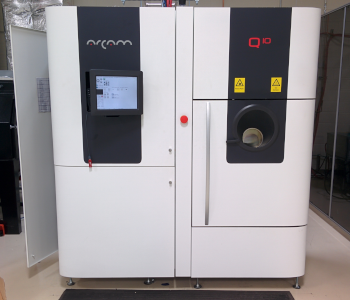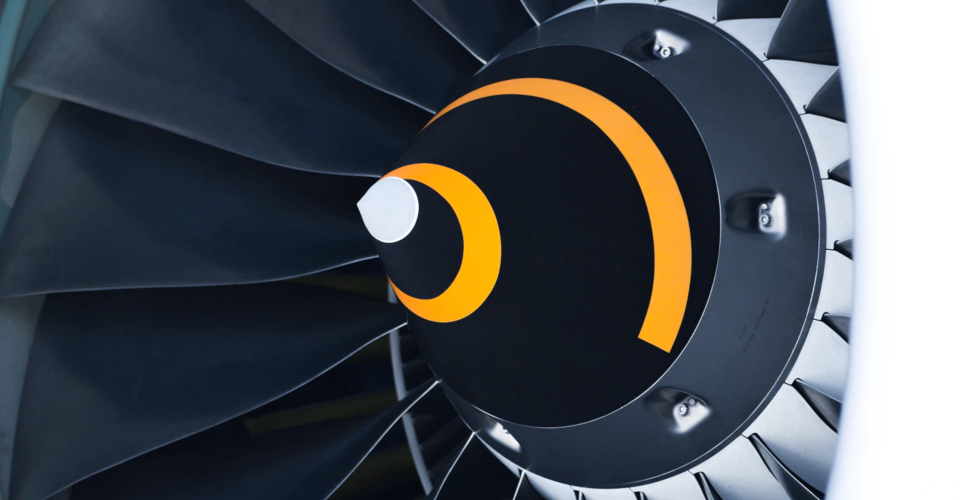What is Electron Beam Melting? Properties, Pros and Cons, and Applications
Manufacturing methods using powdered raw materials have been in practice for several decades. Fast and extremely versatile, the technology has found its way to both large-scale industries and even to desktop-scale machines used by hobbyists.
A lesser-known but widely useful example of this technology is electron beam melting. While it’s not quite as popular as laser-based sintering processes, electron beam melting is increasingly being adopted by many industries, particularly those that produce high-strength and lightweight metal products. What exactly is electron beam melting and how is it different from other sintering processes? How is it used in today’s industries?
What is electron beam melting?
Electron beam melting (EBM) is a type of manufacturing process that uses an energy source to recreate 3D models by melting powdered raw material. In contrast to laser-based sintering and melting processes like Selective Laser Sintering (SLS) and Laser Powder Bed Fusion (LPBF), EBM uses an electron beam, as its name implies. The overall result is quite similar – the powdered raw material selectively melts and fuses with each other to create a solid part.
The process of manufacturing by EBM is similar to the basic 3D printing process. The 3D model to be reproduced has to be processed by a slicer software that is compatible with the EBM equipment to be used. The slicer software then cuts up the model into very thin “slices” which the EBM will use as patterns for where the electron beam will be emitted to. The desired part is then built layer by layer, allowing for highly complex and durable structures.

The energy delivery technology at the heart of the EBM process is the electron beam. An electron gun extracts free electrons from a tungsten filament and accelerates them towards the layer of powdered raw material. In the case of EBM, this raw material necessarily has to be metal. The electrons excite the molecules in the metal, resulting in rapid but controlled heating. This leads to near-instant melting and consolidation of the powdered metal.
As opposed to sintering, EBM fully melts the metal before allowing it to fuse together. This means that parts from EBM have a more homogenous composition and are generally stronger due to reduced porosity. A more organized crystal structure is also maintained in melting processes, making the finished parts less prone to mechanical and thermal failure along all planes.
Since heating of metals makes them more vulnerable to oxidation, EBM has to be conducted under a vacuum.
Pros and cons of electron beam melting
As with any additive manufacturing technology, EBM has advantages that make it suitable for particular applications but also drawbacks that prevent it from widespread adaptation.
PROS
1. Highly suitable for metal parts
When working with metals to create highly customized parts, there’s probably no other manufacturing process that can offer the unique combination of speed, versatility, and reliability of EBM. Since the process fully melts the metal, the strength of its printed parts rivals those made using more old-fashioned molding and casting methods. However, the absence of a mold or cast makes the EBM process much faster and cheaper.
2. Faster than laser sintering
In laser sintering, the laser beam will need to traverse the entire layer of powdered metal according to the pattern determined by the slicer software. While this only takes a few seconds per layer, the time does add up when printing an entire model or several copies of the same model.
A distinguishing characteristic of an electron beam is that it can be separated to heat several places simultaneously. This makes EBM faster even compared to laser-based processes like LPBF. If you need to integrate a metal melting technology into an existing process that requires a quick turnover of parts, then EBM could be the more time-efficient option.
3. No support structures needed
At each layer of the EBM process, fresh metal powder is introduced into the build platform. This powder is heated by the electron beam selectively, which necessarily means that a portion of the powder remains in its original, unfused form. Not only can this residual powder be recovered and reused, but it also provides support for cantilevered features of your model. This means that you will not need to waste unnecessary time and materials to included support structures in the final printed part.
4. Appropriate for low-volume requirements
Metal manufacturing methods that fully melt the metals before fusing typically require a cast or mold to be made based on the part being reproduced. Since making a cast takes a lot of work and time, this technique is only practical for jobs that have a large volume of orders.
On the other hand, the EBM process does not rely on an economy of scale. On a per-unit basis, creating a single unique part using EBM isn’t any more expensive than creating a thousand recreations of the same model. This makes businesses a lot more versatile in the types of jobs that they can accept.
CONS
1. Lower accuracy than laser sintering or melting
Compared to selective laser melting, EBM machines use coarser powders and thicker layers on account of the larger size of electron beams. This limits the degree of detail that you can recreate thru EBM. It also means that metal parts made from EBM tend to come out with rougher surfaces and will require more thorough post-processing to have perfectly smooth surfaces.
2. Exclusively used in metals
EBM relies on the concept of electron uptake, which means that it will only work on materials that are conductive. For this reason, EBM is a manufacturing technique that can only be used with metals. While metal manufacturing is, by itself, a very valuable craft, it bears mentioning that a laser-based sintering or melting process can be used with both metal and plastics.
3. Limited build volume
Laser machines, being more versatile, are also much more accessible. With a greater range of manufacturers offering laser melting or sintering machines, they are most capable of delivering greater manufacturing volumes. On the other hand, EBM machines are typically limited to a build volume that measures less than 400 millimeters in any direction.
This is, perhaps, also one of the biggest disadvantages of an EBM-based manufacturing method compared to more traditional techniques like molding or casting.
Applications of electron beam melting
Electron beam melting is still very much a niche technology limited mostly by its list of compatible materials and associated costs. They are more often used to process high-strength and lightweight metals that would have been more difficult to handle in more old-fashioned metalworking techniques. Right now, there are two major industries served by EBM technology:
Aerospace and aviation components
The design freedom of EBM and its accessibility to low-volume requirements make it a particularly attractive technology for industries that are focused on innovation. The aerospace and aviation industries are two examples that have been benefitting from EBM manufacturing for the last couple of years.
GE has already used EBM technology to 3D print turbine blades for its jet engines. In the GE9X engine, these turbine blades spin at around 2500 times per minute while exposed to intense heat and mechanical stress. These are made using a titanium aluminum alloy that is 50% lighter than other metal alloys typically used in the aerospace industry.
Orthopedic implants
Titanium again plays a central role in the industry of orthopedic implants because of its biocompatible properties. Paired with EBM technology, this has allowed healthcare workers around the world to design and create implants that are highly customized to what the patient requires. An Italian manufacturer of orthopedic implants, called LimaCorporate, was the first to recognize the potential of EBM printers in this industry.
Since the discovery, more than 100,000 hip implants have been made using EBM technology. There’s no frame of reference yet on how long these implants will last, but an orthopedic specialist has estimated that these implants won’t have to be replaced until about 10 or 15 years have passed.
A research group based in Quebec has also been exploring the possibility of using EBM printers to create implants for patient-specific jaw reconstruction. CRIQ, the state-owned organization, already has a 3D printing laboratory but has recently augmented its capabilities with a new EBM printer. With EBM, they expect to accelerate their research efforts in leveraging additive manufacturing technology to improve patient care in a manner that is highly customized yet cost-effective.
Electron beam melting of metal wire
The most common method of using electron beam melting technology for additive manufacturing uses powdered metal or alloys as raw material. However, there’s an alternative use of this technology that uses a metal wire instead. The setup is reminiscent of a Fused Deposition Modeling (FDM) 3D printer – the metal wire is melted by an electron gun, supplying a molten pool of metal feedstock which is then channeled to a substrate plate. The design is then built one layer at a time, much like the usual plastic-based FDM printing process.
While this technology is not common yet, it holds a lot of potential for future manufacturing needs. The metal wire feedstock is already available in the form of welding wire. The process is compatible with any metal that can be used with standard EBDM including titanium alloy, stainless steel, and copper nickel alloys.
However, the process is also slow and very power-intensive. It also suffers from the lack of accuracy that is typical of an FDM-based printing process. The technology will have to improve by a lot if it stands any chance of being accepted widely.
Final thoughts
It’s easy to see how much potential EBM has. Compared to other metalworking techniques, EBM is less labor-intensive, faster, and cost-effective even in low volumes. However, it also requires a huge capital investment and can only be used to work with metals.
Right now, EBM is only used in very specific applications in very demanding industries. If the technology becomes more common and more affordable, we might be able to see EBM machines used in rapid prototyping and other more traditional manufacturing industries. It’s quite exciting what else can be produced with this technology when it becomes more industrially and commercially relevant.


That was extremely informative and a very nice write-up. Thank you for sharing the details. Greatly appreciated.